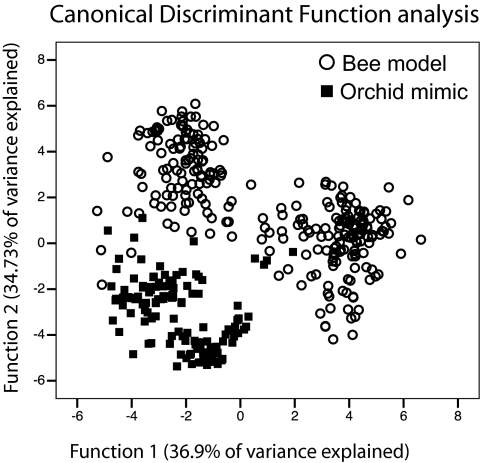Fig. 1.
Differentiation in odor bouquets between orchid mimics (■) and their specific female bee models (○) sampled across a combination of 13 allopatric and 2 sympatric populations in Western Europe (see Materials and Methods for details). CDF plot of biologically active odor compounds (relative proportions in percentage of the total odor blend): the analysis shows that the proportion patterns of the orchids' floral odor compounds differ significantly from the female bees' sex pheromone, irrespective of the geographic origin of the samples. The CDFs explained 71.1% of the total odor variance among samples (36.9% and 34.3%, respectively; Wilks' λ values: Wλ1 = 0.00018 and Wλ2 = 0.0016, associated P1 and P2 < 0.0001; canonical correlation values: Cc1 = 0.947; Cc2 = 0.943). Overall, 66.5% of all cross-validated samples were assigned correctly to their species/population by the two CDFs.

